SUMMARY
This is AI generated summarization, which may have errors. For context, always refer to the full article.
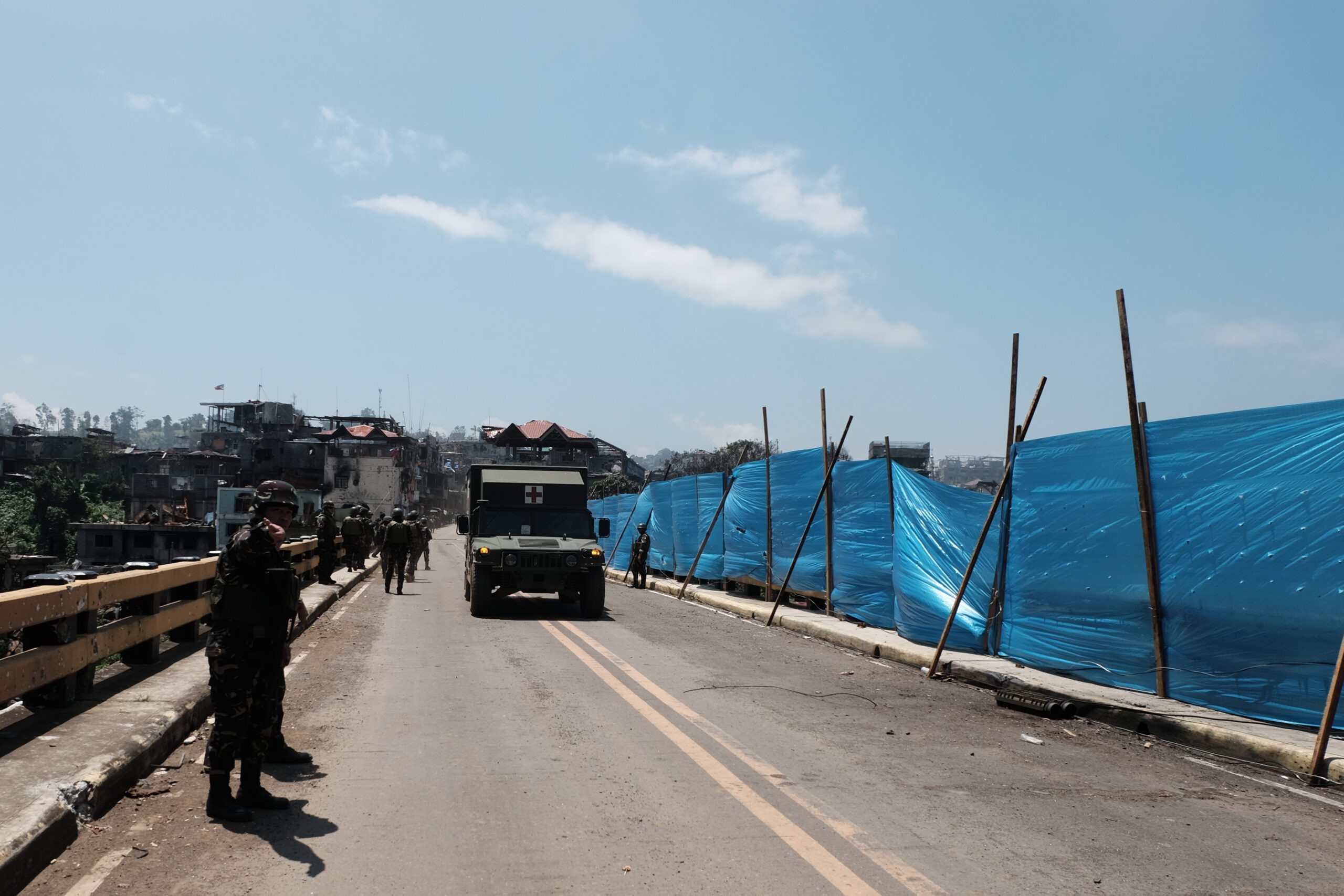
LANAO DEL SUR, Philippines – The military allowed the media to cross the Mapandi Bridge in Marawi City on the 100th day of the conflict on Wednesday, August 30, symbolizing the gains of the military against local terror groups linked with the Islamic State (ISIS).
Amid heavy gunfire just a few blocks away, Joint Task Group Marawi opened up the bridge to journalists, although it was covered with blue laminated sacks to prevent enemies from observing the troops’ movement.
The Mapandi Bridge is one 3 bridges that separate the so-called “safe zone” and the battle area where troops continue to fight less than 100 terrorists. Troops were able to retake the bridge a month ago, on July 20, but has kept the bridge off limits to civilians and the media.
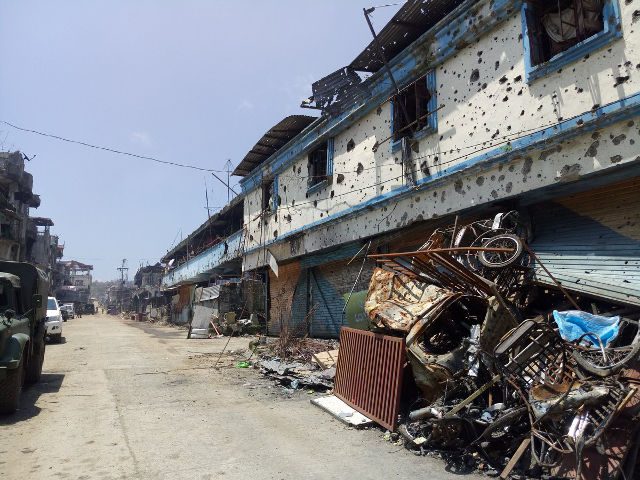
It connects the eastern and western parts of the city and is the military’s main supply route. It is also the same bridge where 13 marines perished on June 9 while trying to recover the area from the Maute Group.
Hundreds of soldiers and police commandos are holding the Mapandi district while combat and clearing operations are ongoing in the main battle area just a few blocks away, .
Brigadier General Melquiades Ordiales Jr, Marine Corp ground commander in Marawi City, said the capture and eventual overrunning of the Mapandi district is vital in the operation as this serves as the main supply route of the military.
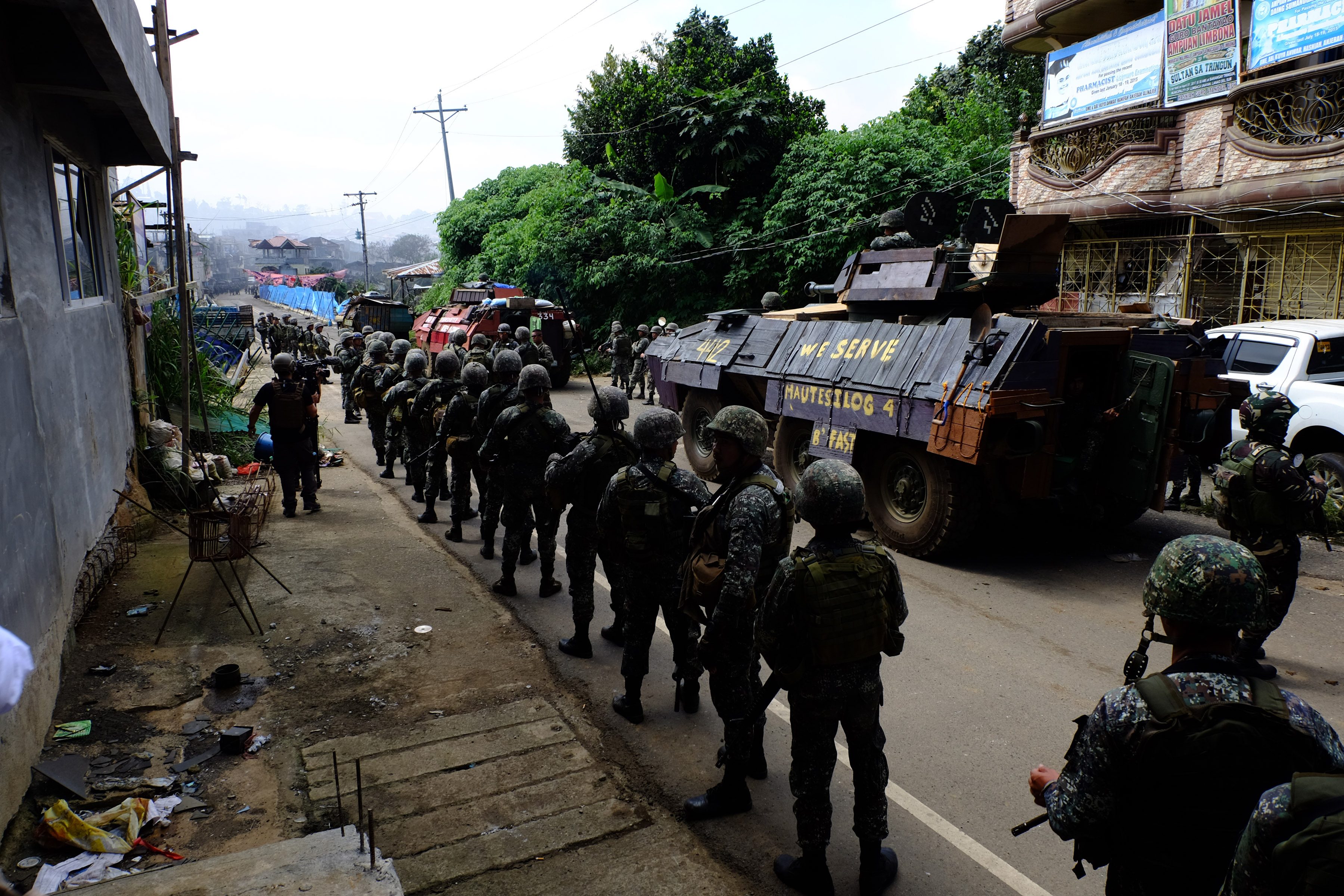
He said the loss of lives on the military side has only strengthened the resolve of government troops to push further.
“The more they are wounded, the braver they get,” Ordiales said.
Ordiales said the soldiers have difficulty in capturing the city back because of the high-rise buildings and solid structures.
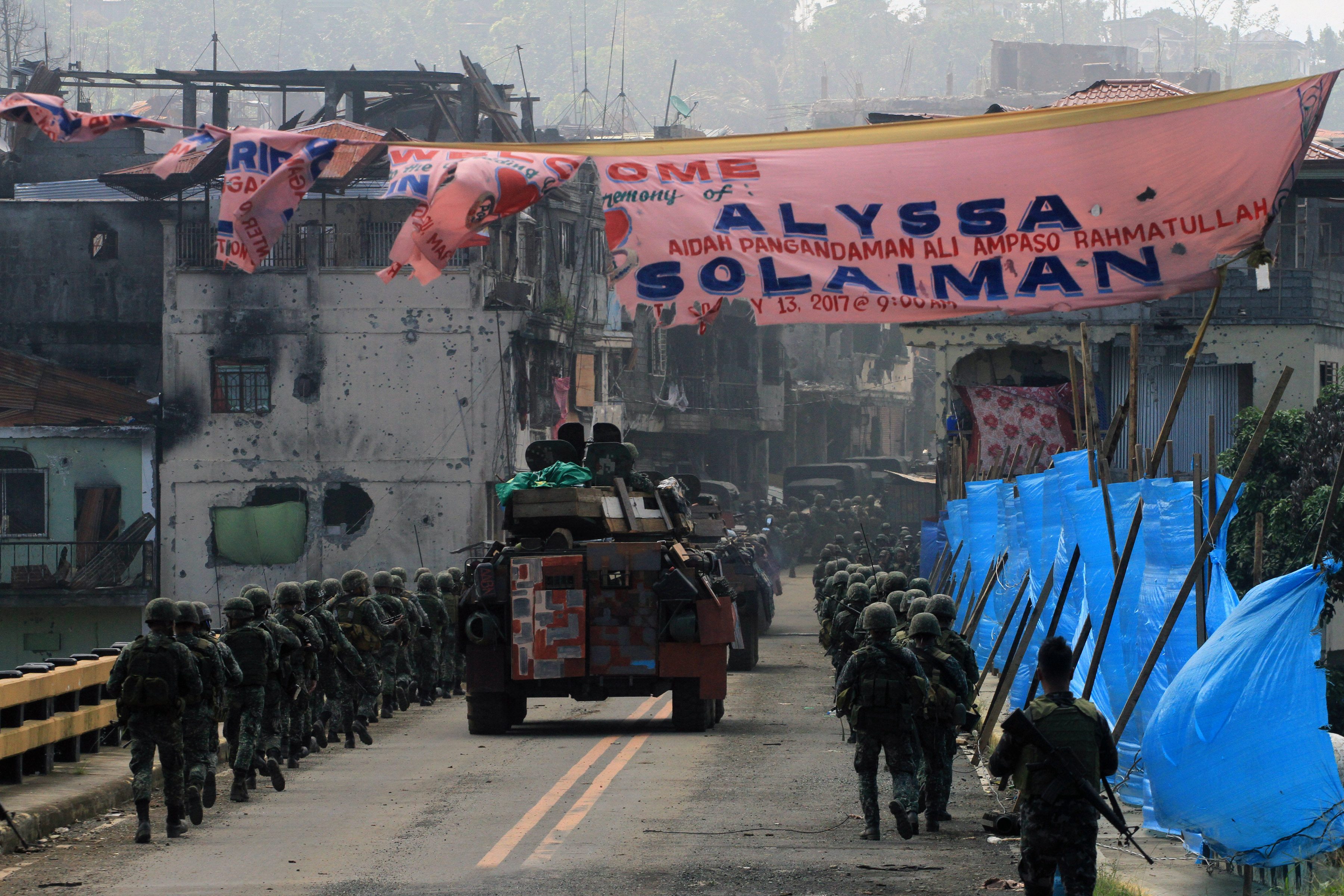
Philippine soldiers are more used to jungle warfare and not in urban fighting. “As we know, we have encounters in the mountains, in open areas, in the forest and jungles. It’s very difficult here because of the high-rise buildings and houses, and one of the tactics of the enemies is they burn the houses, so you can see the difficulty of the soldiers,” Ordiales said.
Ordiales said the structures are well built that even the tanks are having difficulty penetrating the areas in Marawi.
Joint Task Force Marawi Commander Rolando Bautista said there is no timetable in finishing the war: “For all we know, biblical. Let’s us say, ‘In God’s time.’”
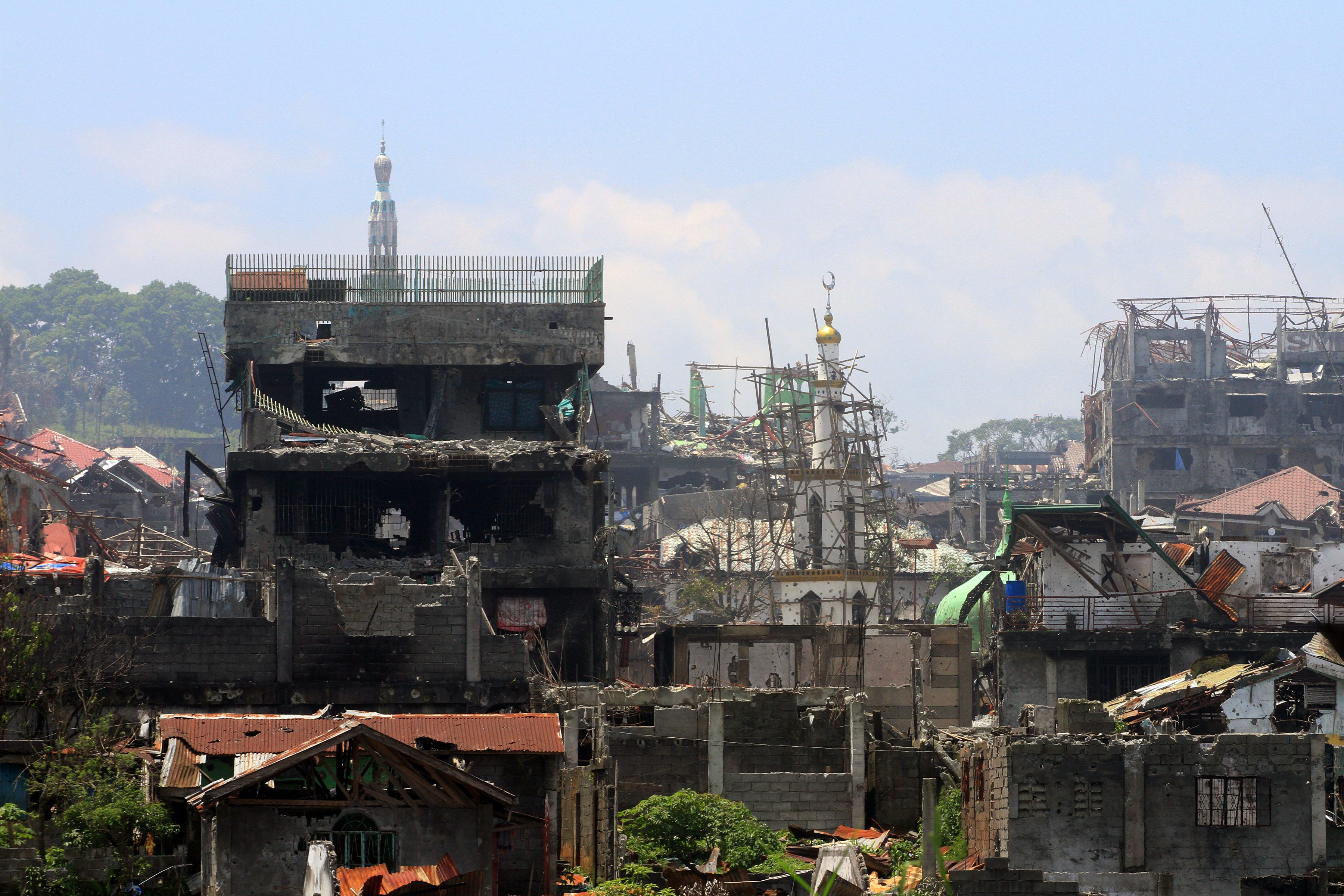
Bautista said one of the difficulties the military has to contend with are the improvised explosive device (IEDs), the use of which the terrorists have intensified.
Special Operations Command (Socom) and Task Force Trident commander Major General Danny Pamonag said the terrorists have also learned from the foreign fighters from Syria and Iraq to intensify their sniping capabilities, the use of IEDs to delay the movement of pursuing troops, and the use of booby traps and Molotov bombs.
Pamonag said the terrorists also learned from the Zamboanga siege in terms of urban combat.
“The Zamboanga [siege] became the template of the terrorists. In Zamboanga, there were less snipers and the IEDs were not that many. More importantly, the area [here] is bigger and the structures, the buildings, here are taller,” he said.
Pamonag said there are many foreign fighters in Marawi: “We got many of them already, and the tactics are almost the same.”
Captain Alfonspin Tumanda Jr of the Navy’s Special Operatons Group said that the terrorists are creating and leaving IEDs that are hurriedly done and less complicated than the ones used in Basilan, but these are slowing down the troops’ movement.
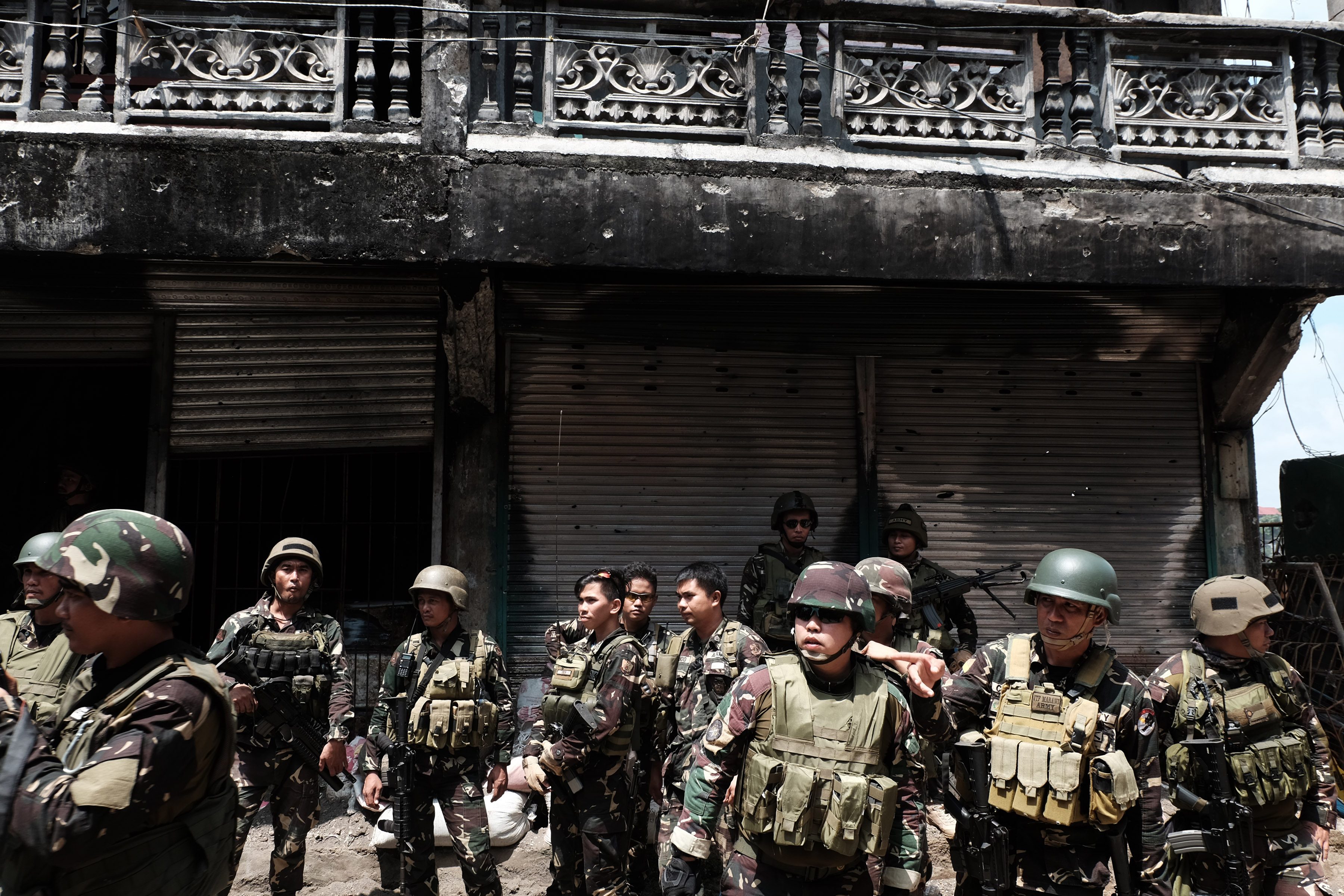
Tumanda, however, is optimistic that the current speed of the recovery of areas may result in ending the crisis within a month.
There are no updates on the status of two other key bridges in the battle area, but the military claims the battle area has been narrowed to about 500 square meters. The terrorist leaders Isnilon Hapilon and Abdullah Maute are believed to be holed up with about 60 hostages.
The war has displaced a combined 600,000 people, including residents of Marawi City and surrounding areas, according to statistics from the Provincial Crisis Management Committee.
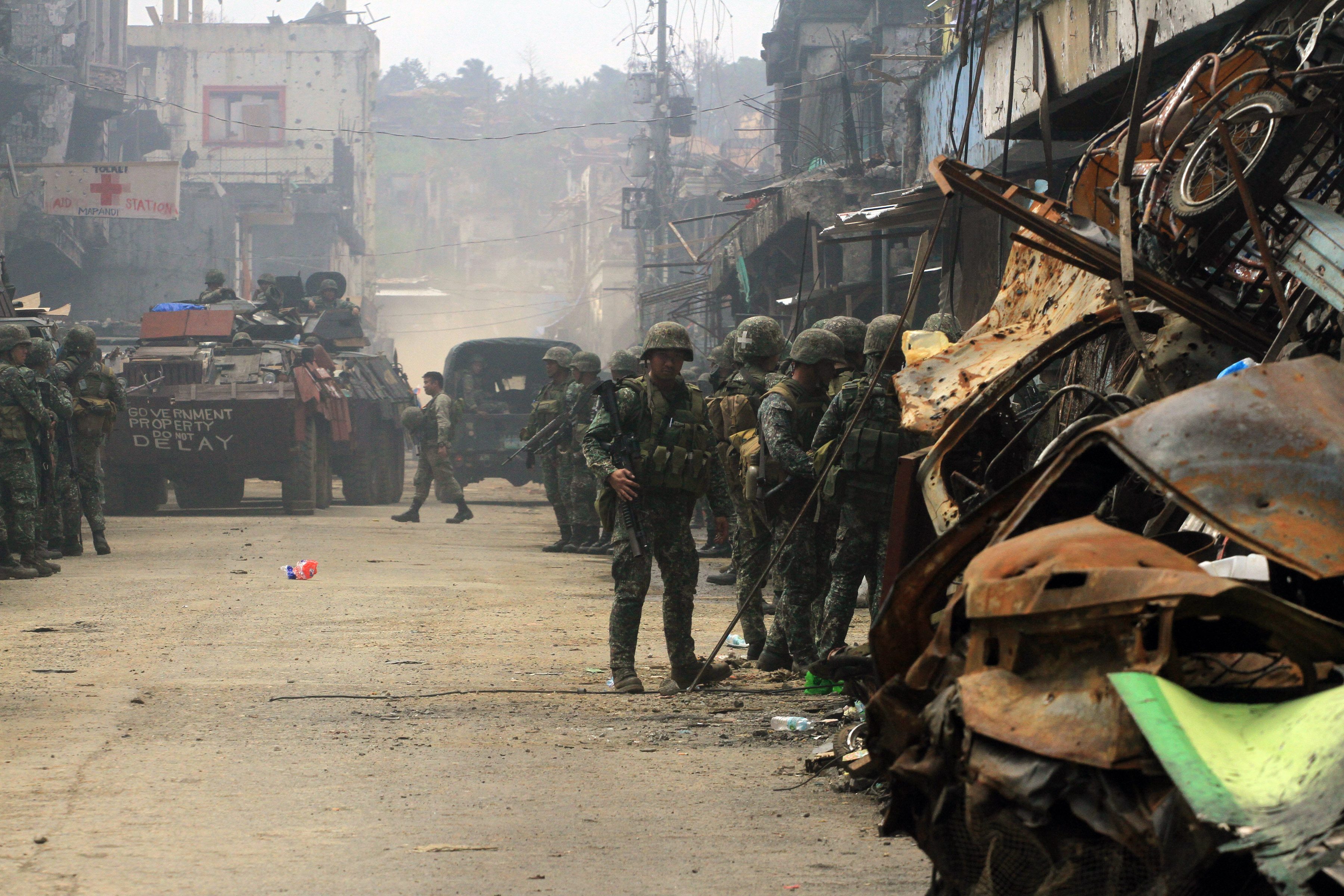
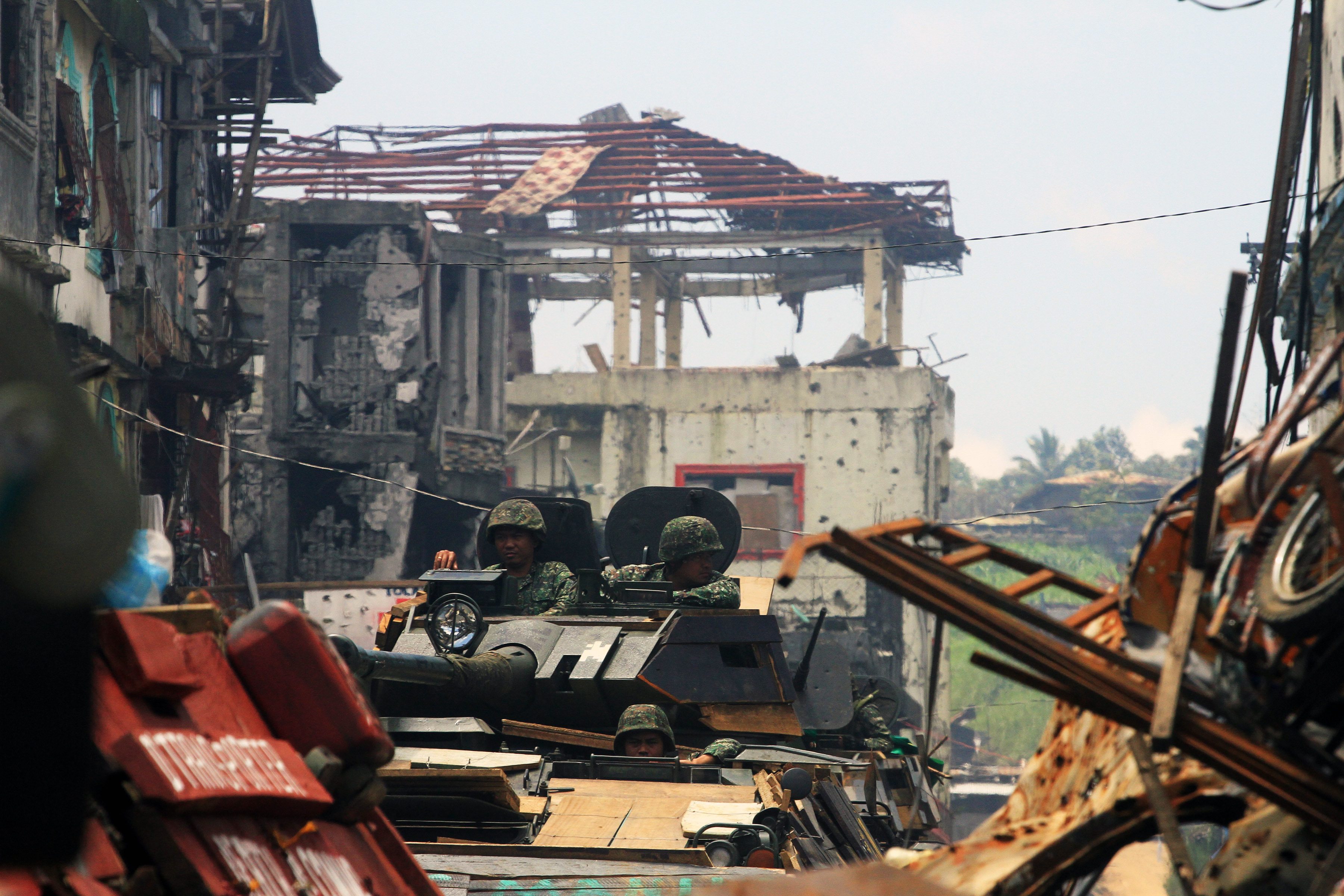
– with reports from Carmela Fonbuena/Rappler.com
Add a comment
How does this make you feel?
There are no comments yet. Add your comment to start the conversation.